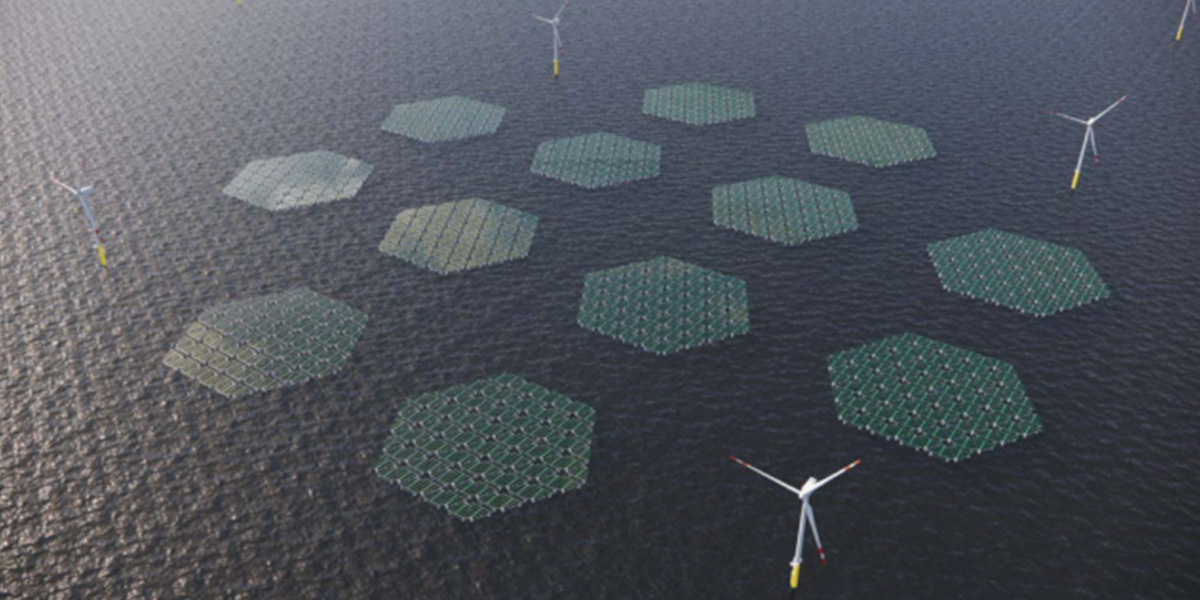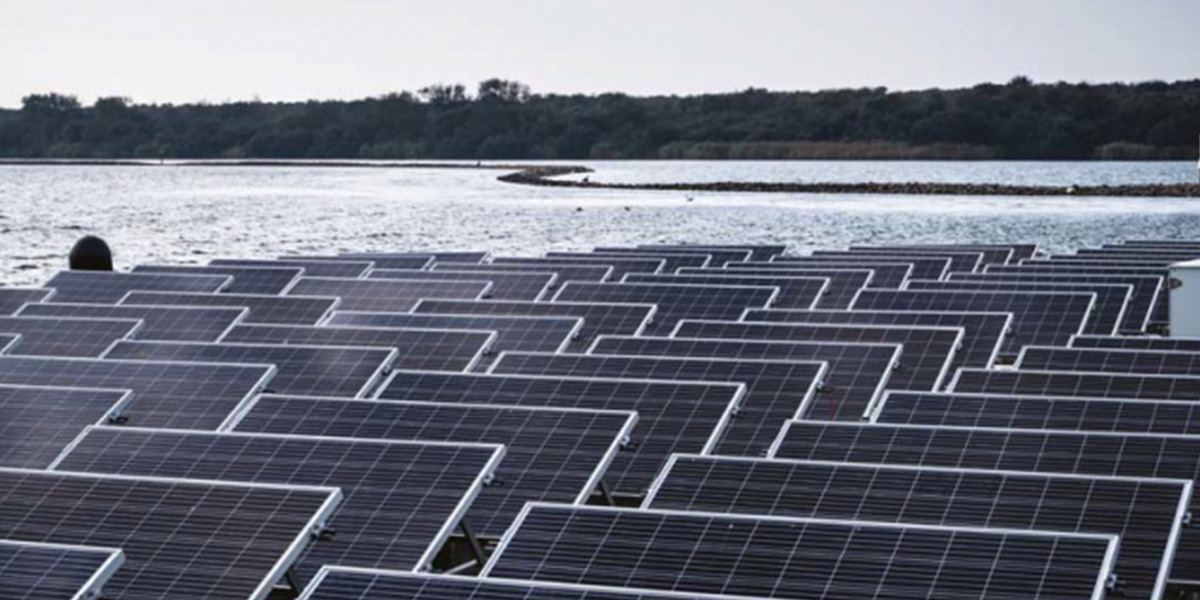Building on the moderate success of floating PV installations on lakes and reservoirs worldwide in recent years, offshore projects present an emerging opportunity for developers, especially when co-located alongside wind farms.
George Heynes explores how the sector is evolving from pilot initiatives to commercially viable large-scale ventures, outlining both the prospects and the hurdles ahead. Globally, solar power continues to gain traction as a variable renewable energy source deployable across diverse regions.
One of the newest, and potentially most significant, methods for harnessing solar energy is now coming to the forefront. Floating photovoltaic (FPV) systems in offshore and nearshore waters could become a transformative technology, successfully generating green energy locally in areas currently constrained by geographical limitations.
Floating PV modules operate fundamentally like land-based systems. The inverter and array are mounted on a floating platform, and the combiner box gathers DC power after generation, which is subsequently converted to AC power by the solar inverter.
Floating photovoltaics can be deployed in oceans, lakes, and rivers, locations where grid development proves challenging. Regions such as the Caribbean, Indonesia, and the Maldives stand to gain substantially from this approach. Pilot schemes have been implemented in Europe, where the technology is gaining further momentum as a complementary renewable asset in the decarbonization toolkit.
The Global Impact of Floating Photovoltaics
A key advantage of offshore floating PV is its ability to coexist with established technologies, boosting renewable energy output at existing sites.
Hydropower facilities can integrate offshore floating PV to enhance project capacity. The World Bank’s report “Where Sun Meets Water: Floating Solar Market Report” indicates that solar capacity can augment the project's power generation and also assist during low water periods by enabling hydropower plants to switch to a “peak-shaving” operational mode instead of a “base load” mode.
The report also showcases other positive aspects of deploying offshore floating PV, including the potential for water cooling to enhance energy yield, reduced or eliminated module shading from the surroundings, avoidance of large site preparation, and relative ease of installation and deployment.
Hydropower isn't the only existing renewable generation that could benefit from offshore floating PV. Offshore wind farms can be combined with offshore floating PV to maximize the productivity of these extensive marine structures.
This potential has sparked significant interest in the numerous wind farms within the North Sea, which offer ideal conditions for developing offshore floating PV plants.
Allard van Hoeken, CEO and founder of Oceans of Energy, stated: “We believe that combining offshore floating PV with offshore wind enables much faster project development because the infrastructure already exists. This supports the advancement of the technology.”

Hoeken added that integrating solar power with current offshore wind farms could yield substantial energy just within the North Sea.
“Combining offshore PV and offshore wind means that just 5 percent of the North Sea could readily supply 50 percent of the Netherlands’ annual energy requirement.”
This potential underscores the technology's significance for the broader solar industry and nations shifting towards low-carbon energy systems.
A major benefit of deploying floating PV at sea is the abundance of available space. Oceans present vast areas suitable for this technology, contrasting with land where competition for space is intense. Floating PV could also alleviate concerns over utilizing agricultural land for solar farms, an issue of growing concern in places like the UK.
Chris Willow, Head of Floating Wind Development at RWE Offshore Wind, concurs, highlighting the technology's considerable promise.
“Offshore photovoltaics has the potential to be an exciting progression from onshore and lakeside technologies, unlocking new possibilities for GW-scale solar generation. By avoiding land scarcity, this technology creates access to new markets.”
As Willow noted, by enabling energy production offshore, offshore PV circumvents land availability issues. As mentioned by Ingrid Lomelde, Senior Naval Architect at Moss Maritime (a Norwegian engineering firm involved in offshore development), the technology holds particular relevance for compact city-states such as Singapore.
“For any nation with limited space for terrestrial energy generation, the potential for offshore floating PV is immense. Singapore serves as a prime example. A significant advantage is the capability to generate electricity adjacent to aquaculture sites, oil and gas production facilities, or other energy-intensive operations.”
This aspect is crucial. The technology could establish microgrids for isolated areas or facilities not connected to the main grid, emphasizing its potential in archipelagic nations facing challenges in building a unified national grid.
Southeast Asia, especially Indonesia, could see major benefits. The region has numerous islands and land less suited for solar development, but possesses extensive networks of water bodies and oceans.
The technology's decarbonization impact could extend beyond national grids. Francisco Vozza, Chief Commercial Officer of floating PV developer Solar-Duck, emphasized this market potential.
“We are beginning to observe commercial and pre-commercial projects emerging in European locations such as Greece, Italy, and the Netherlands. However, opportunities also exist elsewhere, including Japan, Bermuda, South Korea, and across Southeast Asia. There are numerous markets, and we note that current applications are already commercially viable there.”
This technology holds the potential to dramatically increase renewable energy capacity in the North Sea and other oceanic regions, accelerating the energy transition significantly. Nevertheless, several challenges and obstacles must be addressed to realize this ambition.
leave a message
Scan to wechat :
